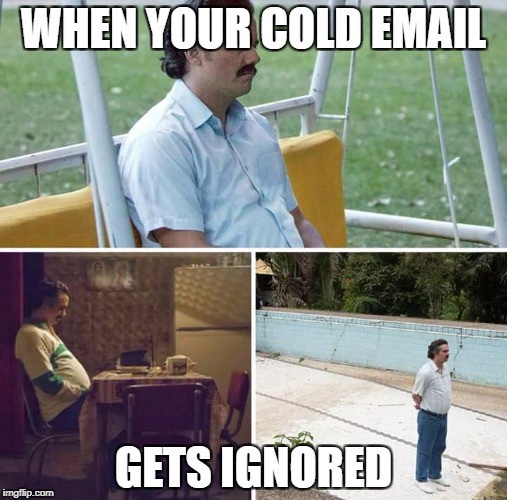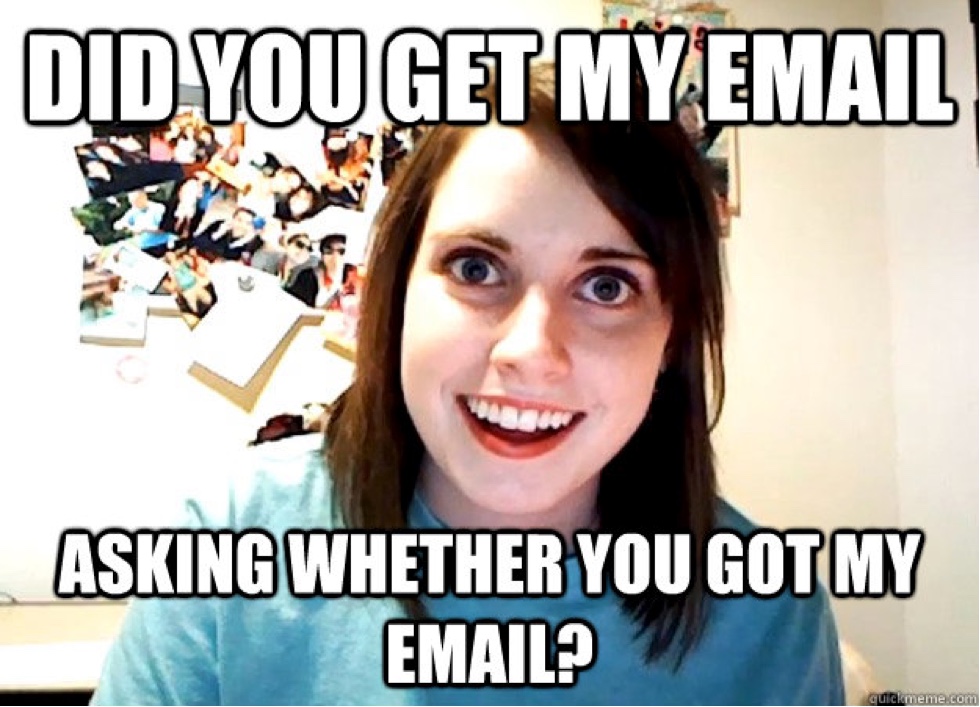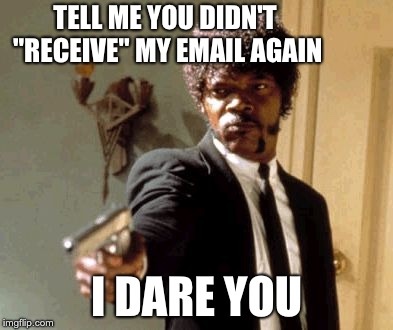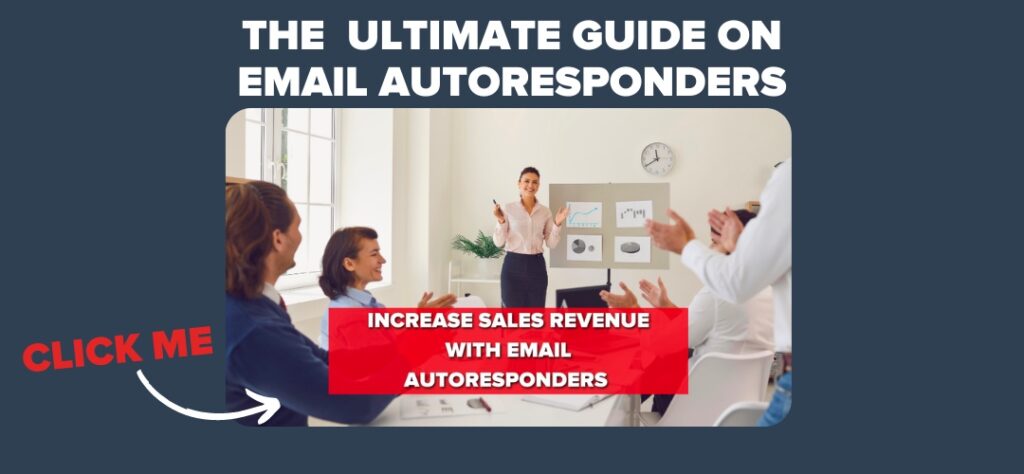Have you ever stared at a list of cold leads, wondering how to breathe life back into them? You’re not alone. Many sales professionals and business owners grapple with the challenge of re-engaging prospects who’ve gone silent. This is where the 9-word email — a strategy that promises to rekindle conversations with just a single, incisive question – comes into play. In this article, you’ll discover the origins of this potent technique, its benefits, and how to craft your own 9-word email. By the end, you’ll be able to use the 9-word email strategy to improve your sales close rates.
- Origins and Concept Behind the 9-word Email
- Benefits of Implementing the 9-word Email in Sales
- How to Craft the Perfect 9-word Email (with tips and examples)
- Potential Challenges and How to Overcome Them
- Measuring the Success of Your 9-word Email Campaigns
- Taking Your Email Strategy to the Next Level
Origins and Concept Behind the 9-word Email
The 9-word email isn’t a newfangled marketing gimmick.
Its roots trace back to real estate entrepreneur Dean Jackson, who pioneered this straightforward yet effective approach.
The concept is deceptively simple: a subject line bearing the recipient’s name, followed by a body text with a one-line, 9-word question.
No fluff, no lengthy introductions, just a direct query that cuts to the chase.
But why just nine words?
The power of this strategy lies in its brevity.
In a world inundated with information and lengthy emails, a concise message stands out. It demands attention.
The 9-word email is designed to re-engage lost or disengaged prospects by reigniting a previous conversation or interest. It’s not about making an immediate sale but about re-establishing a connection.

For example, a question like “Are you still interested in growing your website traffic?” directly addresses a potential need the recipient might have expressed in the past. Such a question prompts a response, be it affirmative or negative, paving the way for further engagement.
Benefits of Implementing the 9-word Email in Sales
Incorporating the 9-word email into your sales strategy can have a bunch of benefits. Here’s a breakdown of why this concise approach can be a game-changer for your sales efforts:
- Re-engagement of Cold Leads
- Increased Open Rates
- Prompt Responses
- Time Efficiency
- Personalisation
- Clarity in Communication
Re-engagement of Cold Leads
The primary goal of the 9-word email is to rekindle interest among prospects who’ve gone cold. A direct question can reignite a conversation, offering a fresh opportunity to steer them back into your sales funnel.
Increased Open Rates
Due to its succinct nature, the 9-word email often piques curiosity, leading to higher open rates compared to lengthier, more traditional emails. The more prospects that open your email, the more chances you have of closing them.
Prompt Responses
The simplicity of the email often elicits quick replies. Whether it’s a ‘yes’ or ‘no’, any response provides clarity on where the prospect stands, allowing you to tailor your follow-up strategy accordingly.
Time Efficiency
Crafting a 9-word email is quick and straightforward, saving you time in the email creation process and allowing you to reach out to more prospects in a shorter span. On top of this, you can automate it using a tool like TextExpander, which saves you more time.
Tip: If you have HubSpot, use a a similar re-usable quick-to-insert text block feature called ‘Snippets’.
Personalisation

By addressing the recipient by name and referencing a previous interaction or expressed need, the 9-word email feels personalised, fostering a sense of connection.
Clarity in Communication
The message is clear and devoid of any potential misunderstandings, ensuring that the recipient knows exactly what you’re asking. Lengthier emails may overwhelm or confuse prospects, but a simple, straightforward question avoids this completely.
How to Craft the Perfect 9-word Email (with tips and examples)
Crafting a 9-word email might seem straightforward, but to maximise its effectiveness, there are certain guidelines you should follow. Let’s delve into some of them.
Choose Your Words Wisely
Every word in your 9-word email counts. Ensure that your message is clear, direct, and relevant to the recipient’s previous interactions or expressed needs.
Example:
“Are you still considering our premium software package?”Another popular variation:
“Have you given up on the <blank> project?
Personalise the Subject Line
Using the recipient’s name in the subject line can increase open rates. It grabs their attention and makes the email feel more personal.
Example:
“John, a quick question for you.”
Avoid Sales Jargon
The goal is to re-engage, not to sell directly. Keep your language simple and avoid using any salesy terms or jargon.
Example:
Instead of “Are you ready to leverage our solution?”, opt for “Are you still interested in our product?”
Be Genuine
Your email should come across as genuine and not just another sales pitch.

This can be achieved by referencing past interactions or specific details about the recipient’s needs.
Example:
“Did you find a solution for your inventory management?”
Expect a Simple Response

The beauty of the 9-word email is its simplicity, which often leads to straightforward responses. Be prepared for both positive and negative replies and have a plan for your next steps based on each potential response.
Example:
If a recipient replies with “Not yet”, your follow-up could be “Would you like more information or a demo?”
Test and Iterate
As with any sales strategy, it’s essential to test different approaches, analyse the results, and refine your strategy based on feedback and response rates.
With these guidelines in mind, you’ll be well-equipped to craft effective 9-word emails that re-engage your prospects and drive meaningful conversations.
Potential Challenges & How to Overcome Them
The 9-word email strategy, while effective, does come with its own set of challenges. Let’s delve into these potential obstacles and how to address them.
Perceived as Too Direct or Impersonal
Some recipients might find the brevity of the 9-word email too direct or lacking a personal touch.
Solution:
Ensure that your email list is well-segmented. Tailor your 9-word questions based on previous interactions, ensuring they are relevant and show that you remember past conversations.
Risk of Oversimplifying the Message
With only 9 words, there’s a risk of oversimplifying your message or not conveying the full context.
Solution:
While the email itself is concise, the context should be clear from previous interactions. If necessary, a follow-up email can provide more details based on the recipient’s response.
Low Response Rate

Not everyone will respond to your 9-word email, which can be discouraging.
Solution:
Regularly update and clean your email list to ensure you’re reaching out to engaged and relevant leads. Additionally, A/B test different 9-word questions to see which ones resonate most with your audience.
Misinterpretation of the Email’s Intent
Some recipients might not understand the purpose of the email or misinterpret its intent.
Solution:
While the 9-word email is meant to be direct, ensure it doesn’t come off as aggressive. Frame your question in a way that it’s clear you’re seeking to understand and help, not push a sale. For example, rather than “Would you like to try x solution?”, you could ask “Are you still interested in x solution?”
Concerns About Spam Filters
Short emails, especially those with similar structures sent in bulk, might trigger spam filters.
Solution:
Use email marketing tools that allow you to monitor deliverability rates, such as HubSpot. Ensure that your emails are compliant with best practices to avoid being flagged as spam.
Measuring the Success of Your 9-word Email Campaigns
To determine the effectiveness of your 9-word email strategy, it’s crucial to track specific metrics. These metrics will not only provide insights into the success rate but also guide future campaigns.
Open Rate
The open rate indicates the percentage of recipients who opened your email. A high open rate suggests that your subject line was compelling enough to pique the recipient’s interest.
The average open rate according to a Mailchimp study is 21.33%.
Response Rate
This metric measures the percentage of recipients who replied to your email. A high response rate is a strong indicator of the effectiveness of your 9-word question.
Conversion Rate
The conversion rate tracks the percentage of recipients who took a desired action after reading your email, such as signing up for a webinar, making a purchase, or scheduling a call.
Bounce Rate
Bounce rate refers to the percentage of emails that were not delivered to the recipient’s inbox. A high bounce rate could indicate issues with email deliverability or the quality of your email list.
Feedback and Sentiment Analysis
Collecting feedback from recipients can provide valuable insights into how your email was perceived. Sentiment analysis tools can help gauge the overall sentiment of the responses, whether positive, negative, or neutral. HubSpot’s Service Hub is an example of a Sentiment Analysis Tool you could use.
A/B Testing Results
If you’ve tested different versions of your 9-word email, compare the results to determine which version resonated most with your audience.
By closely monitoring these metrics, you can refine your 9-word email strategy, making necessary adjustments to improve engagement and conversion rates. Remember, the ultimate goal is to re-engage lost or disengaged prospects and guide them further down the sales funnel.
Taking Your Email Strategy to the Next Level
The 9-word email strategy is a powerful tool in the arsenal of sales professionals and business owners.
Its simplicity, directness, and focus on re-engaging lost or disengaged prospects make it a unique approach in the world of email marketing. However, like any strategy, its success hinges on understanding your audience, crafting the right message, and measuring its impact.
As you embark on implementing the 9-word email in your sales strategy, remember to stay true to its essence: clarity, brevity, and engagement. It’s not just about the number of words but the value and relevance of the message to the recipient.
By combining the insights from this guide with continuous testing and refinement, you can elevate your email campaigns, rekindle relationships with cold leads, and drive meaningful conversations that lead to conversions.
Do you want to take your email marketing strategy to the next level? That’s where email autoresponders come into play. Check out our guide on how to increase your sales revenue with email autoresponders.













